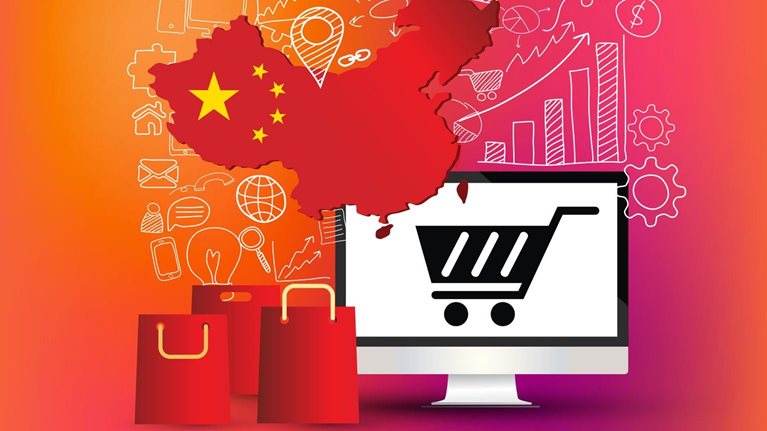Adopting a multilocal mind-set is in the DNA of Garena Group, based in Singapore. The company’s Internet platform is transforming many of the day-to-day transactions performed throughout Southeast Asia—creating local top-up networks to digitize cash, combining chat messaging with forms of payments and content, and leveraging social-media networks to drive e-commerce. With innovations such as these, the opportunities to capture this market continue to grow.
In this interview with McKinsey’s Rik Kirkland, Group president Nick Nash talks about the company’s distinctly local (and convenient) approach to digitizing payments and the ways in which e-commerce is increasingly synonymous with social networking.

Defending Southeast Asian consumer-company value in a digital age
Interview transcript
Payments for the unbanked
The holy grail of the Internet is actually less the web browser and less the mobile phone. It’s actually the ability to pay at a distance. If you can’t transact beyond an arm’s-length radius, e-commerce breaks down. And as a result, in Southeast Asia, e-commerce has been a laggard.
When we think about China, we think about a rapidly growing, emerging market—one which has a fully intact, fully operational financial-services system. Virtually every man, woman, and child above a certain age has a bank account. And without a whole lot of fuss, they can link that up to an Alipay account or to a WePay account.
If I draw the comparison to Southeast Asia, it’s night and day. Despite bank accounts as a concept being hundreds if not thousands of years old, something like 65 percent of the Indonesian adult population doesn’t have a bank account. Seventy-one percent of the Vietnamese adult population. About 65 percent of the Filipino adult population. And even in places like Thailand and Malaysia, it’s a much, much larger number than you’d think.
It’s only in the last 24 months that we’ve been able to solve this problem, and the solution is wonderfully local: a mobile wallet or a PC wallet combined with a deeply local top-up network where regular moms and dads, [and] regular folks that are earning every day can actually deliver cash into a network and have that cash be digitized. In fact, it’s such an extensive network we’ve built, we have almost 150,000 locations now across Southeast Asia.
Stay current on your favorite topics
They tend to be stores within a store. It can be as simple as a small coffee shop. It could be a very large retail establishment. But typically, all you have to do is show up with your credentials, your log-in information or your phone number, [and] hand over baht or dong or rupiah, as the case may be. And in a matter of microseconds, that money’s been uploaded to your own wallet.
Beyond the web browser
What Tencent has done remarkably well is to realize that combining chat messaging both on PC and on mobile with forms of content, forms of payment, forms of e-commerce is really, really powerful. In some ways, at a more fundamental level, there’s a recognition that the web browser was the central venue for Internet-based businesses from 1994 to perhaps 2014.

Messaging apps are changing how companies talk with customers
We’re very similar to Tencent in many ways, but for Southeast Asia and Taiwan. People have greater trust with merchants within a certain degree of proximity to them. If a seller is within 20 or 30 miles of you, you probably have some friends in common. You know, maybe you were at his house for dinner. Or maybe you were at a wedding together. Our e-commerce business is not just a shopping app, it’s a social network. You can follow sellers. You can follow other buyers, and you can track a little bit of their progress almost as, you know, entrepreneurs or friendly shopkeepers down the street.
Moore’s law for SKUs
In the West, e-commerce is dominated by 1P platforms—first-party platforms. They have warehouses, they take on inventory, they play an incredible role in the supply chain. And that’s possible because (1) second-day or even same-day delivery is feasible in many developed economies, and (2) the preponderance of brands and the consumer desire to buy from a handful of branded providers rather than a long tail of providers is significantly greater. That translates into Amazon’s business model, which is a 1P e-commerce leader, certainly on a global basis, certainly in America.
Asia’s very different. If you look at the most valuable e-commerce company in Asia, it’s Alibaba, with a $240 billion market cap. And Alibaba is first and foremost a third-party business—tens of millions of merchants on the platform, all competing, all creating variety. And that is very much the Asian model of e-commerce.
We have a phrase for this inside of Garena. We call it “Moore’s law for SKUs”—Moore’s law for stock-keeping units. And no one really knows how many global SKUs there are in physical objects—shirts and watches and shoes and shower curtains and whatnot. But let’s just arbitrarily say it’s a certain number in the tens of millions. We see that number doubling over some period of time and doubling again and doubling again over the next 10 or 20 years.
And that is going to hit Southeast Asia and South and East Asia in an enormously powerful way. And it’ll happen less through traditional offline retailers and more through 20 [million] to 30 million sellers on platforms, each of which are the curators of their own little museum of SKUs.
Today, including Taiwan, we have two million registered sellers on our platform. That’s an extraordinary number. The largest shopping mall we know of probably has several hundred, maybe a thousand merchants.
Approaching ten million consumers as well. But that ratio is actually rather interesting. Ten million consumers versus two million merchants. That might defy conventional wisdom, but it speaks to the value of authenticity, adding in Moore’s law for SKUs. Consumers want lots and lots of different things. They don’t just want the same shirt or the same iPhone.


